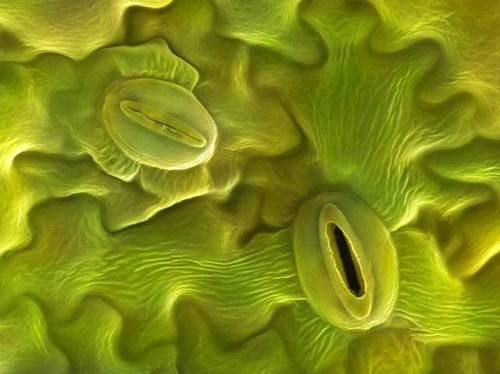The Titanoboa, Is A 48ft Long snake Dating From Around 60-58million Years Ago. It Had a Rib Cage


The Titanoboa, is a 48ft long snake dating from around 60-58million years ago. It had a rib cage 2ft wide, allowing it to eat whole crocodiles, and surrounding the ribcage were muscles so powerful that it could crush a rhino. Titanoboa was so big it couldn’t even spend long amounts of time on land, because the force of gravity acting on it would cause it to suffocate under its own weight.
More Posts from Rocks-everywhere and Others






Follower celebration: Make me choose between __and __
@x-kytanna-x asked: Thorin or Bilbo?

Goethite #Geology #GeologyPage #Minerals
Locality: Tharsis, Alosno, Huelva, Andalusia, Spain.
Specimen size: 40 x 20 mm. Extracted 1988
Photo Copyright © C.P minerals
Geology Page www.geologypage.com — view on Instagram https://scontent-iad3-1.cdninstagram.com/v/t51.2885-15/106193068_407386830178888_8061962398241985536_n.jpg?_nc_cat=108&_nc_sid=8ae9d6&_nc_ohc=0X753ippRj8AX-WxGSv&_nc_ht=scontent-iad3-1.cdninstagram.com&oh=364ad51db7c80c0f6e2c64ee59d52baf&oe=5F236426
I miss doing microscope work. Can we make a thread of our favourite thin section? This is mine
Actinolite Schist


A Highland Coo and her calf wandering down an empty road, Argyll and the Isles, Scotland. Credit: Andy Maclachlan.
This radiant Sodalite mineral rock. Tenebrescence is the ability of minerals to change colour when exposed to light.
Source


The Hobbit: An Unexpected Journey (2012)
“Did I not say that you would be a burden? That you would not survive in the wild? That you had no place amongst us?”
What if... what if I WANT an info dump???
Then you're my favorite and I will dump SO much info on natrocarbonatite lava
No one knows for sure why or how this type of lava forms. Oldoinyo Lengai is the only volcano on earth that actively erupts it currently, and Oldoinyo Lengai hasn't been extensively studied.
The factor that causes lava to be viscous (thick, and sticky) is its silica content. Rhyolitic magmas, like those in Washington, have around 70 weight % silica. Basaltic magmas, like the volcanoes in Hawai'i, are around 45 wt% silica. Natrocarbonatite lava is less than 3% silica. Its flow rate is close to water, so it flows faster than you can outrun.
It's also a LOT less hot than other lavas. Most lavas are from 700-1200 degrees C (basaltic lavas in the higher range, rhyolitic lavas in the lower), but natrocarbonatite is around 500-600 degrees C. It's cool enough that you won't immediately die if you fall into it (you'll be hospitalized for months, as one man who fell into it was, but it's survivable). It's so cool that you can't see it glow in daylight.

It flows black and cools white! This is because of its content of the minerals nyerereite and gregoryite, which are unstable and break down quickly when exposed to humidity.
Basically it's cool as fuck literally and figuratively and I'm obsessed with it











Stomata as a Proxy for Atmospheric CO2 Levels
These strange, mouth-like structures are called stomata. Stomata are specialized pore structures found on plant leaves that permit the exchange of gases such as CO2, O2 and H2O, between the inside and outside of the leaf. They do so through the opening and closing of stomatal guard cells.
Plants convert visible light into sugars via the process of photosynthesis, which uses CO2 as a reactant. Along with light availability and temperature, CO2 is a limiting reactant of photosynthesis which means that the quantity of this compound controls the number of reactions that can take place.
Keep reading

-
 void-home reblogged this · 2 weeks ago
void-home reblogged this · 2 weeks ago -
 thefluentstudent reblogged this · 2 weeks ago
thefluentstudent reblogged this · 2 weeks ago -
 weird--thingx reblogged this · 2 weeks ago
weird--thingx reblogged this · 2 weeks ago -
 turningthunderintograce reblogged this · 3 weeks ago
turningthunderintograce reblogged this · 3 weeks ago -
 deathbyspade liked this · 3 weeks ago
deathbyspade liked this · 3 weeks ago -
 transmasc-wheatley liked this · 3 weeks ago
transmasc-wheatley liked this · 3 weeks ago -
 beammeupmoony reblogged this · 1 month ago
beammeupmoony reblogged this · 1 month ago -
 beammeupmoony liked this · 1 month ago
beammeupmoony liked this · 1 month ago -
 soidreamtiwasastarfleetcommander reblogged this · 1 month ago
soidreamtiwasastarfleetcommander reblogged this · 1 month ago -
 yetanothersaint reblogged this · 1 month ago
yetanothersaint reblogged this · 1 month ago -
 gromky liked this · 1 month ago
gromky liked this · 1 month ago -
 gatheredbugs reblogged this · 1 month ago
gatheredbugs reblogged this · 1 month ago -
 aseriousweakness liked this · 1 month ago
aseriousweakness liked this · 1 month ago -
 onpyre reblogged this · 1 month ago
onpyre reblogged this · 1 month ago -
 covelovebot reblogged this · 1 month ago
covelovebot reblogged this · 1 month ago -
 covelovebot liked this · 1 month ago
covelovebot liked this · 1 month ago -
 chocolatechopshopcupcake liked this · 1 month ago
chocolatechopshopcupcake liked this · 1 month ago -
 azure-aeon-soulstar liked this · 1 month ago
azure-aeon-soulstar liked this · 1 month ago -
 aubrietarose reblogged this · 1 month ago
aubrietarose reblogged this · 1 month ago -
 aubrietarose liked this · 1 month ago
aubrietarose liked this · 1 month ago -
 bigbadowlet reblogged this · 1 month ago
bigbadowlet reblogged this · 1 month ago -
 the-great-bridge-builder reblogged this · 1 month ago
the-great-bridge-builder reblogged this · 1 month ago -
 cutietofluff liked this · 1 month ago
cutietofluff liked this · 1 month ago -
 edgemarquess reblogged this · 1 month ago
edgemarquess reblogged this · 1 month ago -
 catsrcoolyeet liked this · 1 month ago
catsrcoolyeet liked this · 1 month ago -
 fearthefae reblogged this · 2 months ago
fearthefae reblogged this · 2 months ago -
 truthfulquandary reblogged this · 2 months ago
truthfulquandary reblogged this · 2 months ago -
 doyoupraisethewalls liked this · 2 months ago
doyoupraisethewalls liked this · 2 months ago -
 saltyartofcroatia reblogged this · 2 months ago
saltyartofcroatia reblogged this · 2 months ago -
 saltyartofcroatia liked this · 2 months ago
saltyartofcroatia liked this · 2 months ago -
 just-funny-reposts liked this · 2 months ago
just-funny-reposts liked this · 2 months ago -
 theaflamedsky reblogged this · 2 months ago
theaflamedsky reblogged this · 2 months ago -
 sammitch reblogged this · 2 months ago
sammitch reblogged this · 2 months ago -
 zmierzchy liked this · 2 months ago
zmierzchy liked this · 2 months ago -
 moisheee liked this · 2 months ago
moisheee liked this · 2 months ago -
 virsia reblogged this · 2 months ago
virsia reblogged this · 2 months ago -
 itsme-littlelassgt reblogged this · 2 months ago
itsme-littlelassgt reblogged this · 2 months ago -
 icome-hereto-forget liked this · 2 months ago
icome-hereto-forget liked this · 2 months ago -
 betweenbutterflies reblogged this · 2 months ago
betweenbutterflies reblogged this · 2 months ago -
 weepingactorsoverpopmusic reblogged this · 2 months ago
weepingactorsoverpopmusic reblogged this · 2 months ago -
 weepingactorsoverpopmusic liked this · 2 months ago
weepingactorsoverpopmusic liked this · 2 months ago -
 smilingturtlethatsmiles liked this · 2 months ago
smilingturtlethatsmiles liked this · 2 months ago -
 pongos-adventure reblogged this · 2 months ago
pongos-adventure reblogged this · 2 months ago -
 glitchven liked this · 2 months ago
glitchven liked this · 2 months ago -
 quirked-up-wight-boy reblogged this · 2 months ago
quirked-up-wight-boy reblogged this · 2 months ago -
 quirked-up-wight-boy liked this · 2 months ago
quirked-up-wight-boy liked this · 2 months ago -
 gilberik liked this · 2 months ago
gilberik liked this · 2 months ago -
 small-but-oho reblogged this · 2 months ago
small-but-oho reblogged this · 2 months ago -
 applejuicewerewolf reblogged this · 2 months ago
applejuicewerewolf reblogged this · 2 months ago
225 posts